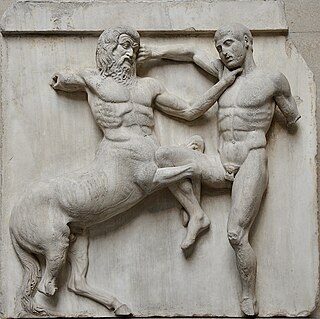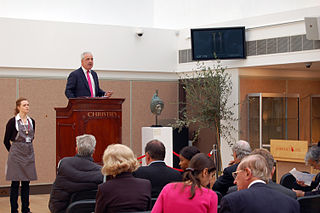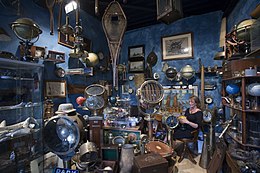
The hobby of collecting includes seeking, locating, acquiring, organizing, cataloging, displaying, storing, and maintaining items that are of interest to an individual collector. Collections differ in a wide variety of respects, most obviously in the nature and scope of the objects contained, but also in purpose, presentation, and so forth. The range of possible subjects for a collection is practically unlimited, and collectors have realised a vast number of these possibilities in practice, although some are much more popular than others.

A collectable is any object regarded as being of value or interest to a collector. Collectable items are not necessarily monetarily valuable or uncommon. There are numerous types of collectables and terms to denote those types. An antique is a collectable that is old. A curio is something deemed unique, uncommon, or weird, such as a decorative item. A manufactured collectable is an item made specifically for people to collect.

Retro style is imitative or consciously derivative of lifestyles, trends, or art forms from history, including in music, modes, fashions, or attitudes. In popular culture, the "nostalgia cycle" is typically for the two decades that begin 20–30 years ago.

A vintage car is, in the most general sense, an old automobile, and in the narrower senses of car enthusiasts and collectors, it is a car from the period of 1919 to 1930. Such enthusiasts have categorization schemes for ages of cars that enforce distinctions between antique cars, vintage cars, classic cars, and so on. The classification criteria vary, but consensus within any country is often maintained by major car clubs, for example the Vintage Sports-Car Club (VSCC) in the UK.
A classic car is typically an automobile 25 years or older; however, definitions vary. A common theme is that of an older car of historical interest is collectible and tends to be restored rather than scrapped, though sometimes age is not a factor. Classic cars are often considered a subset of a broader category of "collector cars," including restored classic cars and newer exotic vehicles. A subset of classic cars are known as antique cars, manufactured before 1980, or vintage cars, manufactured before World War II.

A piece of antique furniture is a collectible interior furnishing of considerable age. Often the age, rarity, condition, utility, or other unique features make a piece of furniture desirable as a collectors' item, and thus termed an antique. The antique furniture pieces reflect the style and features of the time they were made; this can be called the antique's "period". Christie's defines it as being over 100 years old.

Antiquities are objects from antiquity, especially the civilizations of the Mediterranean: the Classical antiquity of Greece and Rome, Ancient Persia (Iran), Ancient Egypt and the other Ancient Near Eastern cultures. Artifacts from earlier periods such as the Mesolithic, and other civilizations from Asia and elsewhere may also be covered by the term. The phenomenon of giving a high value to ancient artifacts is found in other cultures, notably China, where Chinese ritual bronzes, three to two thousand years old, have been avidly collected and imitated for centuries, and the Pre-Columbian cultures of Mesoamerica, where in particular the artifacts of the earliest Olmec civilization are found reburied in significant sites of later cultures up to the Spanish Conquest.
Although an antique tool might be said to be one that is more than a hundred years old, the term is often used to describe any old tool of quality that might be deemed collectable.
New old stock (NOS), or old stock for short, refers to aged stock of merchandise that was never sold to a customer and still new in original packaging. Such merchandise may not be manufactured anymore, and the new old stock may represent the only current source of a particular item. There is no consensus on how old a product must be to be NOS, and some people reserve an NOS label only for products that are actually discontinued.

An art dealer is a person or company that buys and sells works of art, or acts as the intermediary between the buyers and sellers of art.

Leigh Ronald Keno and Leslie Bernard Keno are American antiquarians, authors, historic car judges, preservationists and television hosts. They specialize in stoneware, early American furniture and vintage automobiles. They are widely known as appraisers on the PBS series Antiques Roadshow, for favoring preservation of antiques over restoration and for their high-energy personalities.
Ruby Lane, founded in 1998, is a vintage online retail store based around independent member traders.

Catawiki is an online auction platform for buying and selling special items and collectibles. Catawiki was founded in 2008 as an online community for collectors. Since 2011, the company has been hosting weekly online auctions, in various categories such as vintage comic books, model trains, coins, watches, art, jewellery and classic cars.
Jon Baddeley is a fine art auctioneer, an authority on scientific instruments and collectables, a broadcaster and an author.

The European Fine Art Fair (TEFAF) is an annual art, antiques and design fair organized by The European Fine Art Foundation in the MECC in Maastricht, Netherlands. It was first held in 1988.
An Antique toy show is one of several toy shows held throughout the United States, usually on an annual basis, that is devoted to the exhibition, for sale, of antique toys, dolls and collectible paraphernalia. Toy shows are generally regional in nature, and cater to a certain geographic area of the country. The larger shows, such as the Miami Antique Toy Show and the Chicago Toy Show and the Greater Boston Antique and Collectible Toy Show encompass a broader clientele.
Collectors Weekly is an online resource for people interested in antiques, collectibles, and vintage items. The site pairs live auctions with original content, which ranges from encyclopedic essays to multi-sourced articles that aim to illuminate the cultural history of objects.

The art market is the marketplace of buyers and sellers trading in commodities, services, and works of art.
Vintage design refers to an item of another era that holds important and recognizable value. This style can be applied to interior design, decor, clothing and other areas. Vintage design is popular and vintage items have risen in price. Outlets of vintage design have shifted from thrift store to shabby chic stores.

Albert Milton Sack was an American antiques dealer and author. He was the son of antiques dealer Israel Sack. He wrote a popular reference book on early American antique furniture — "the bible for a generation of weekend antiquers and a standard for professional collectors" according to the New York Times.

















